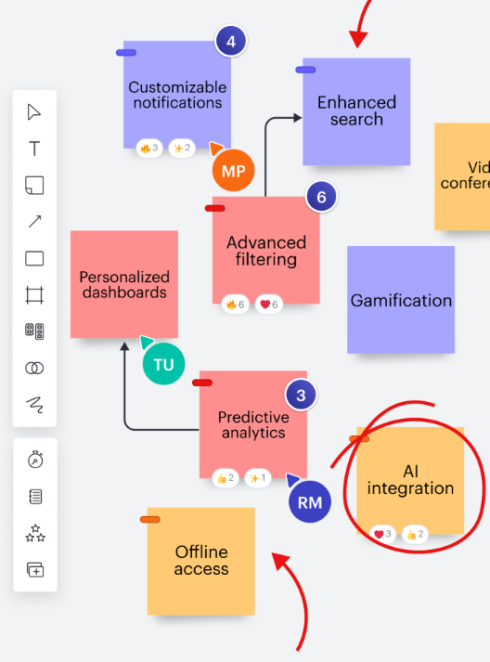
Fostering a positive developer experience and aligning it with business goals may seem like an obvious focus for organizational stakeholders. When developers feel empowered to innovate, they deliver customer experiences that positively impact the bottom line. Yet key organizational stakeholders still struggle to get visibility into how products are advancing, from ideation to delivery.
To help those teams gain insights into how products are advancing, Lucid Software is announcing enhancements to its visual collaboration platform that are designed to help elevate agile workflows by cultivating greater alignment, creating clarity and improving decision-making.
“Visual collaboration is about seeing an entire workflow from the very beginning, enabling teams to align, make informed decisions and guide the initiative all the way to market delivery,” said Jessica Guistolise, an evangelist, Agile coach and consultant at Lucid. “Lucid excels at bringing all necessary information into one platform, supporting teams regardless of whether they follow Agile or simply need to iterate faster.”
Visuals, Guistolise said, are important for getting all stakeholders on the same page and improving the overall developer experience. “Prior to the pandemic, agile teams would gather in one room surrounded by visuals and sticky notes that displayed their work, vision, mission and tracked dependencies. Then, we all went home. Now where does all that information live?” Lucid, Guistolise explained, became a centralized hub for teams that have everything they need to do their work, day in and day out.
Lucid’s latest release includes an emphasis on team-level coordination and program-level planning. On the team level, there are features for creating dedicated virtual team spaces for organizing such critical artifacts as charters, working agreements and more. Lucid’s platform replicates the benefits of physical team rooms and serves as a central hub for collaboration, where all needed documents are stored and can be shared. On the program level, real-time dependency mapping enables visualization and management of those dependencies directly from Jira and ADO. Other new features are structured big room planning templates to coordinate cross-functional work and the ability to sync project data between Lucid, Jira and ADO to have the most current information reflected across all platforms.
When it comes to team-level coordination, team spaces are customizable, allowing for a more personalized and engaging work experience. “When working with distributed teams, fostering a sense of team connection can be a challenge,” Guistolise said. “This brings some of that humanity and team experience. ‘What did you do this weekend? Can I see a picture of your dog?’ All of that can be done visually and it cultivates a shared understanding of one another, and not just of the work that we’re doing.”
Speaking to how these features enhance the developer experience, Guistolise came to embrace agility because, she said, “when we bring humanity back into the workplace and elevate the overall team experience, we not only boost collaboration and efficiency but also foster connection that makes those moments more enjoyable.”
Customizable Agile templates are also available to help guide teams through daily standups, sprint planning retrospectives and other Agile events by offering integrated tools such as timers, laser pointers and the ability to import Jira issues.
Lucid also offers a private mode to allow for anonymous contributions of ideas and feedback. Guistolise explained that private mode offers psychological safety “to allow for those voices who may not feel comfortable speaking up or even dissenting in a meeting.” Private mode, she added, still allows teams to surface that information anonymously, which means better decisions will be made in the long run. The release also includes new estimation capabilities for streamlining sprint planning using a poker-style approach, and those estimates can be synced with Jira or ADO to align planning and execution.
Further, two-way integrations with Jira and Azure DevOps mean that “no one has to take pictures of the sticky notes on the walls and then type it into a back-end system so there’s a record of what is going on,” she said. Instead, because of the integrations, everything moves automatically back and forth between systems, providing updated, real-time information upon which to make those business and development decisions.
These latest innovations from Lucid Software empower developer teams to have a more positive working experience by providing the tools they need to navigate the complexities of Agile workflows, from daily coordination to large-scale program planning. By enhancing both team-level and program-level collaboration, Lucid continues to lead the way in providing the most intelligent and comprehensive visual collaboration platform to support modern teams.






